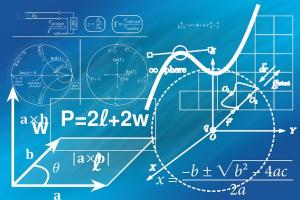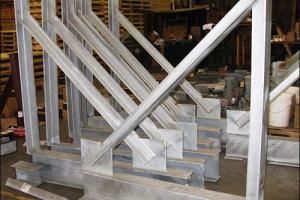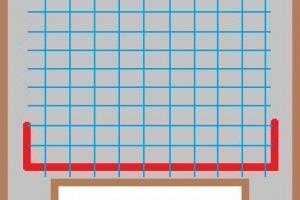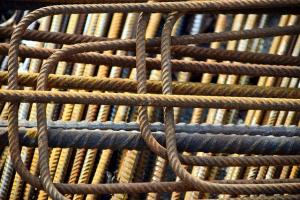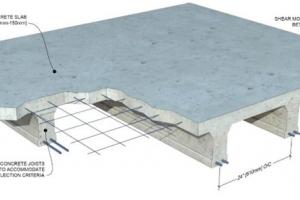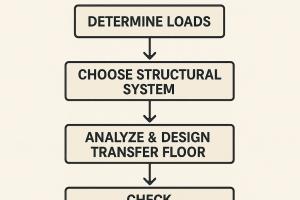Stability - Stable & Unstable Structures & Members

Definition
The resistance offered by a structure to undesirable movement like sliding, collapsing, overturning, etc is called stability.
- Stability depends upon the support conditions and arrangements of members.
- Stability does not depend upon loading.
STABLE STRUCTURES
A stricter is said to be stable if it can resist the applied load without moving OR A structure is said to be stable if it has a sufficient number of reactions to resist the load without moving.
UNSTABLE STRUCTURE
A structure that does not have a sufficient number of reactions to resist the load without moving is called an unstable structure.
Stability of Structures
STABILITY OF TRUSS
A truss is said to be stable if it is externally and internally stable. The stability of structures, including trusses, is a crucial aspect of structural engineering. Stability refers to the ability of a structure to maintain its equilibrium and resist any external forces or loads without experiencing excessive deformation or failure. In the case of trusses, stability can be assessed in terms of external stability and internal stability.
EXTERNAL STABILITY OF TRUSS:
External stability refers to the overall equilibrium and support provided by the reactions at the supports of a truss. For a truss to be externally stable, the following conditions must be met:
-
Non-Parallel Reactions: The reactions at the supports should not be parallel to each other. If the reactions are parallel, it implies that the truss is either over-constrained or under-constrained, leading to instability. Non-parallel reactions ensure that the forces at the supports can provide sufficient support and prevent the truss from collapsing.
-
Non-Concurrent Reactions: The reactions at the supports should not pass through the same point. If the reactions are concurrent, it indicates that the forces at the supports are acting in a single line of action, which can result in instability. Non-concurrent reactions distribute the forces over a wider area and ensure that the truss remains in equilibrium.
By satisfying these conditions of external stability, a truss can maintain its overall stability and resist external loads and forces.
INTERNAL STABILITY OF TRUSS:
Internal stability refers to the stability of individual members within a truss. Each member of the truss should be capable of carrying the applied loads without buckling or undergoing excessive deformation. Internal stability is achieved by ensuring that the members are designed to resist the expected forces and moments acting on them. This involves determining the appropriate cross-sectional dimensions, material properties, and connections for each member to ensure their strength and stability.
In addition to external and internal stability, other factors such as geometric stability (maintaining the desired shape), dynamic stability (resisting vibrations), and stability under extreme conditions (such as fire or earthquakes) also need to be considered in the design and analysis of trusses.
Internal stability of the truss depends upon the arrangements of members and joints as
* If m + r = 2j internally stable * If m + r < 2j internally unstable * If m + r > 2j indeterminate
Where m = a number of members, J = a number of joints, and R = a number of unknown reactions.
For complete stability, they should be both internally and externally stable
Stability of Structural Members
The stability of structural members, such as beams, is crucial to ensure the overall strength and integrity of a structure. The stability of a beam refers to its ability to resist external loads and maintain equilibrium without experiencing excessive deformations or failure. Several conditions must be satisfied to ensure the stability of a beam.
STABILITY OF BEAMS
A beam is said to be stable if it satisfies the following conditions.
- The number of unknown reactions must be greater or equal to the available equations of equilibrium
- All the reactions should not be parallel to each other.
- There should be no concurrent force system i.e. unknown reactions should not pass through the same point or line.
A Number of Unknown Reactions: The first condition for the stability of a beam is that the number of unknown reactions should be greater than or equal to the available equations of equilibrium. Equilibrium equations, such as the sum of forces in the vertical direction, the sum of forces in the horizontal direction, and the sum of moments about a reference point, are used to analyze the forces and moments acting on the beam. By having a sufficient number of unknown reactions, the beam can be properly analyzed and solved for the unknowns, ensuring equilibrium.
Non-Parallel Reactions: Another condition for beam stability is that all the reactions should not be parallel to each other. If the reactions at the supports are parallel, it indicates that the beam is either over-constrained or under-constrained, which can lead to instability. Non-parallel reactions ensure that the forces at the supports can provide sufficient support and prevent the beam from collapsing.
Non-Concurrent Force System: The third condition for beam stability is that there should be no concurrent force system, which means that the unknown reactions should not pass through the same point or line. If the reactions are concurrent, it implies that the forces at the supports are acting in a single line of action, which can result in instability. Having non-concurrent reactions distributes the forces over a wider area and helps the beam maintain equilibrium.
By satisfying these conditions, the stability of a beam can be ensured. Proper design and analysis techniques are employed to determine the support reactions, distribute the loads effectively, and select appropriate beam sizes and materials to ensure stability and structural integrity.
STABILITY OF FRAME
A frame is said to be stable if it satisfies the following condition:
The number of unknown reactions must be greater to equal to available equations of equilibrium.
The stability of a frame is an important consideration in structural engineering to ensure the overall strength and integrity of the structure. Stability in the context of frames refers to the ability of the frame to maintain its equilibrium and resist external loads without experiencing excessive deformations or failure. For a frame to be stable, it must satisfy certain conditions, particularly in terms of equilibrium equations.
One key condition for the stability of a frame is that the number of unknown reactions should be greater than or equal to the available equations of equilibrium. In other words, the number of support reactions (unknowns) should be equal to or exceed the number of equations of equilibrium available to solve for these reactions.
Equilibrium equations, such as the sum of forces in the x-direction, the sum of forces in the y-direction, and the sum of moments about a reference point, are used to analyze the forces and moments acting on the frame. These equations are derived based on the principles of statics and are essential for determining the unknown support reactions.
By ensuring that the number of unknown reactions is greater than or equal to the available equilibrium equations, the frame can be analyzed and solved for the unknown reactions, thereby maintaining equilibrium. This condition ensures that the frame is properly supported and can resist the external forces applied to it without causing instability or failure.
It is important to note that stability considerations for frames go beyond just the equilibrium equations. Other factors, such as member strength, stiffness, and geometric stability, also play crucial roles in ensuring the stability of the frame. Proper design and analysis techniques are employed to ensure that the frame remains stable and capable of carrying the intended loads safely.
In summary, the stability of a frame is determined by satisfying the condition that the number of unknown reactions is greater than or equal to the available equilibrium equations. This condition ensures that the frame remains in equilibrium and can effectively resist external loads. Proper design and analysis techniques are employed to ensure the stability and structural integrity of frames.



